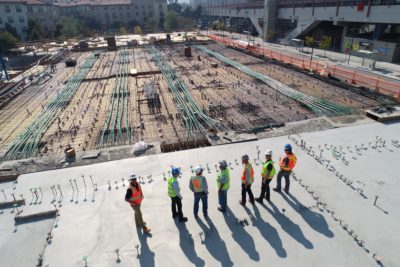The Future Home Standard – What does it mean for you?
The energy efficiency of buildings will play an important role if we’re to meet the target of net zero emissions by 2050. As part of the mission, the Future of Homes Standard outlines what steps need to be taken to implement the required changes in the housing sector.
But what does this mean for your business?
What is the Future Homes Standard?
The Future Home Standard (FHS) is a set of standards that should ensure new homes built from 2050 will produce 75-80% less carbon emissions than 1990 levels.
January 2021 saw the Government publishing the outcome of the October 2019 Future Homes Standard consultation, seeing further amendments to Part F (ventilation) and Part L (conservation of fuel and power). This document is named The Future Building Standard and sets out proposed changes to Part L and F. Starting from 2025, the Future Buildings Standard will produce highly efficient new non-domestic buildings which use low-carbon heat and have the best fabric standards possible.
What are the key outcomes?
Changes to building regulations will deliver homes that are zero-carbon ready from 2025. The FHS should see homes fitted with low carbon methods of heating, with heat pumps expected to become the main source of heating for most new homes.
It has been expected for a gas boiler ban with homes adapting to energy-efficient insulation and low carbon heating, such as heat pumps. Heating systems will be required to run at lower temperatures to ensure heat pumps work effectively. The government has said it will introduce a 2022 interim uplift in building standards as a first step, with homes being built to these standards producing 31% less carbon dioxide emissions.
Tighter building regulations will be introduced with new measures being taken, such as contractors taking photographs on site. These photos will be shared with homeowners, with the aim of giving them a stronger understanding of how the as-built energy calculation was conducted. The FHS highlighted the need for improving energy standards by correctly installed insulation, but the construction industry must come to a consensus as to how to achieve these future standards with the materials and renewables available.
What should I do now?
From June 2022, the interim uplift in standards will come into place through an updated Part L of the Building Regulations. This means homes built to the new standard will be required to meet carbon, primary energy, affordability, and fabric energy efficiency standards. Developers must submit a building notice by June 2022 for transitional arrangements to apply.
For now, look at your future projects to ensure you understand which version of Part L to apply to them. Any projects submitted after June must adhere to the new interim Part L standards. Existing homes will be subject to higher standards, with replacement, repairs, and parts to be more energy efficient.
How we can help
At Clean Growth UK we can help you decarbonise your business. We have access to academic expertise, with our Innovation Accelerator helping to design, develop, and refine innovative green products, services, and business processes.
Attend our Future of Housing event where we’ll explore the change needed to make housing carbon neutral.
Photo by Scott Blake on Unsplash.
